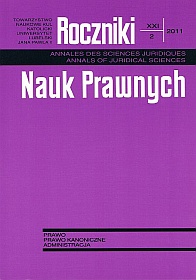Falsified Legal Norms in Mid 9th Century
Abstract
In the Merovingian era, the Church in Gaul was beginning to transform into a local church. Bishops resided in major cities, managing the whole of ecclesiastical local life. Slowly, a parish system came into being. After Gaul came under Germanic occupation, bishops started to support influential individuals in particular factions – those who were in charge of the appointment of bishopric officials. Bishops now cared less for religious life, hence the need for reforms was born. Some reforms were tried in the time of Carolingians, and synods were going to play a significant role. Charlemagne carried out major reforms as he wanted to hold the highest authority, both as head of State and head of Church. This fact brought about the dependency of the Church on secular authority. The successive ruler, Louis the Pious did not intervene into ecclesiastical matters with much zeal, just like his predecessor. Well-educated bishops in the time of Charlemagne had begun to regain their influences in the Church. It was then that the idea of law-based Church was born. In mid 9th century, it is supposed, in western Gaul, perhaps in the province of Reims, legal norms contained in different collections were falsified. Also, new false norms were formulated. Four collections were created: Collectio Hispana Augustodunensis, Capitularia Benedicti Levitae, Capitula Angilramni and Decretales Pseudo-Isidorianae. The main idea that the unknown authors had in mind was defence of the Church against the influences of secular authority, consolidation of canon discipline, the right of the clergy to be tried before ecclesiastical courts, and strengthening of the Pope’s supremacy.
Copyright (c) 2011 Roczniki Nauk Prawnych

This work is licensed under a Creative Commons Attribution-NonCommercial-NoDerivatives 4.0 International License.


